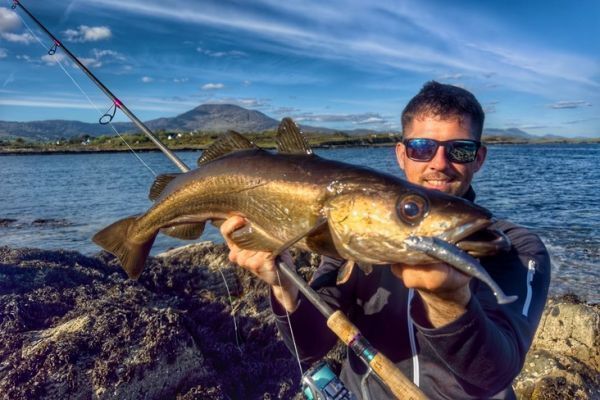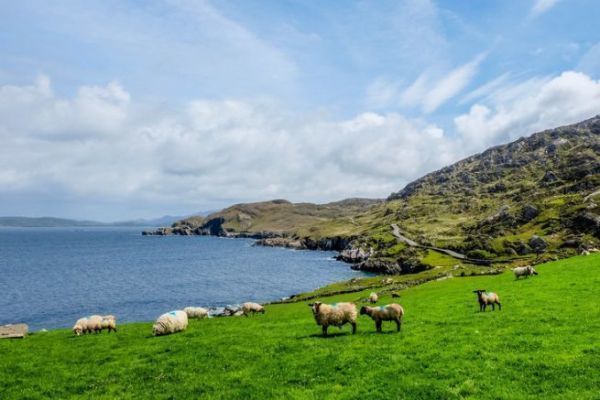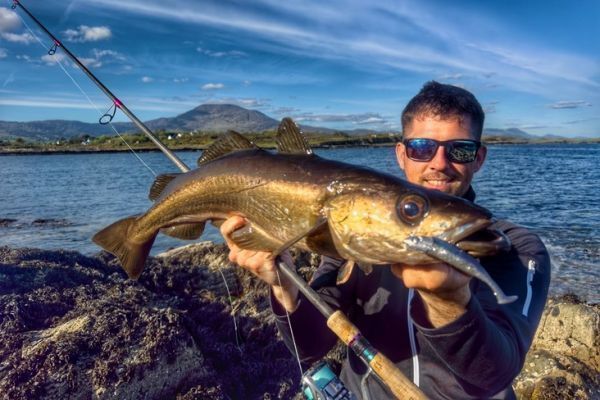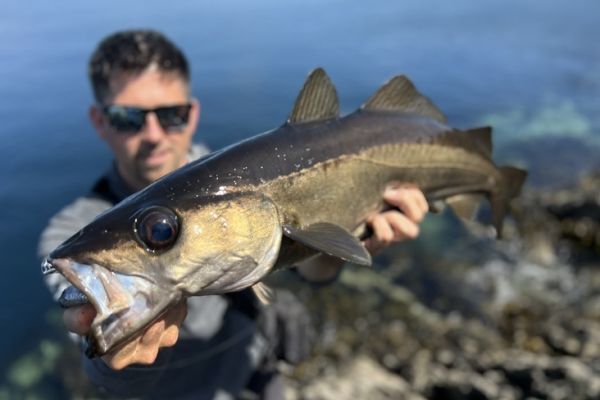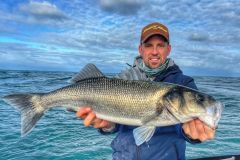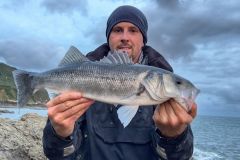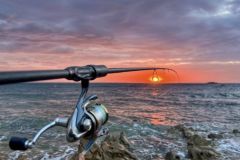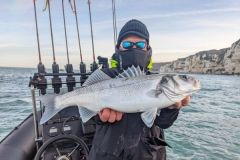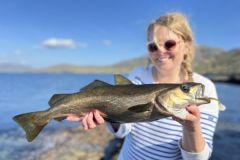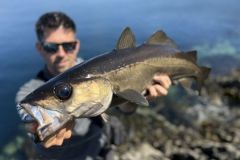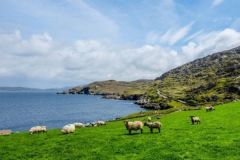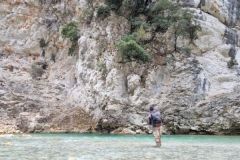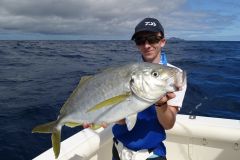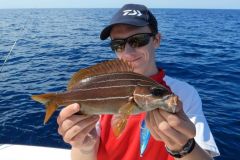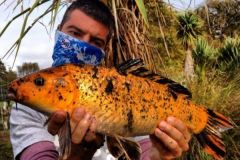Choosing the right rod for shore fishing
The configuration of the coastline requires the use of an adapted walking stick.
A sufficient length will enable you to cast far: a minimum of 2.40 m is required. It also offers better control during fights, especially at the crucial moment when the fish reaches the bank.
A long rod also makes it easier to pass the line over rocks, limiting the risk of snags.
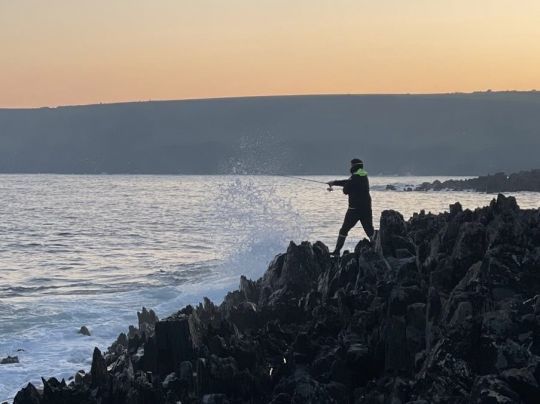
Power ranging from 15/50 to 40/80 g will suit most situations. Given the depth of the water, the often strong wind which sometimes forces you to cast against gusts, and the use of heavy lures, this type of power is essential.
I turned to two Rodhouse ensembles:
- The first, the NFC SJ 804 DELTA, is a 2.43 m rod with 15/40 g of power. Its length enabled me to cast far and easily animate shads with ample pulls. What's more, its 2.43 m length is a real asset in the fight to manage the fish when it reaches the bank.
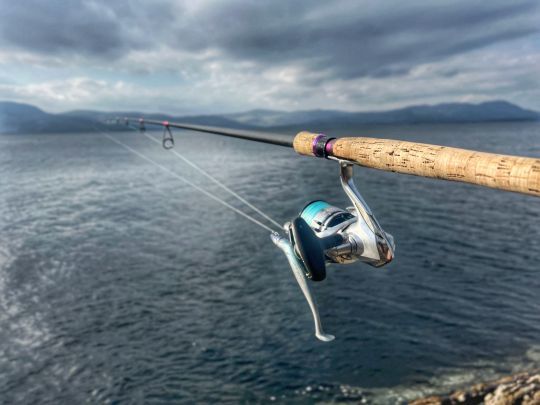
- The second, more powerful rod is the NFC MB 739 IM. This 2.21 m, 20/80 g rod served me well when I was using heavier sets. When casting, its 2.21 m makes itself felt and it's harder to reach long distances. On the other hand, its sensitivity and high power reserve have enabled me to express the power of kelp fish with authority.
A reel adapted to size 4000
For this type of fishing, I opted for a 4000-size reel combining lightness, fluidity and sturdiness. The brake is precise and allows you to handle the powerful rush characteristic of this fish. I opted for the Shimano Stradic 4000. Its retrieve, close to a metre per crank revolution, is a considerable advantage, and is exactly what I look for in all the reels I use for shore fishing .
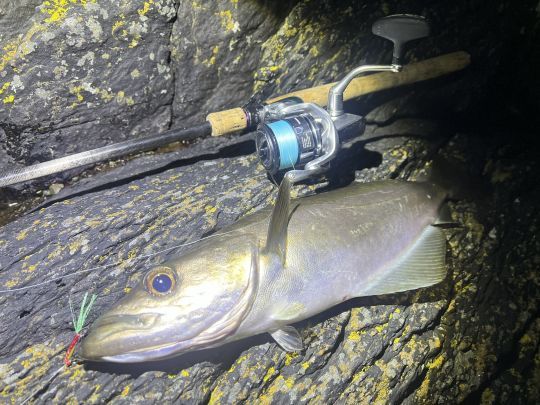
I filled this one with Rodhouse Prodigy PE 1 braid. It may look thin, but the strength is there, and I didn't experience any breakage on the braid.
Watch out for the leader!
This is a point to be borne in mind. Shore fishing presents an additional constraint to boat fishing. Here, the leader rubs much harder on the rocks, and abrasion is high. If you underestimate the quality and resistance of your leader, you risk losing a good number of fish.
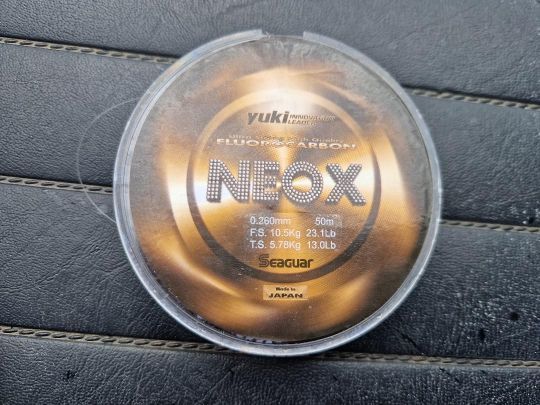
To remedy this, one brand stands out from the crowd: Yuki's Neox, which I use in 26-centimeter diameter for a claimed and actual resistance of 10 kilos.
The choice of lures!
In all honesty, I underestimated my lure selection, especially when it came to leaded heads. I hadn't expected to fish so deep and had only taken a few "heavy" heads, yet the majority of my sets were armed with heads between 30 and 50 grams.
The first model I selected and which has given me very good results is the casting jig. Even in windy conditions, its high density enables it to reach very good casting distances. Its descent is fast and allows you to reach great depths.
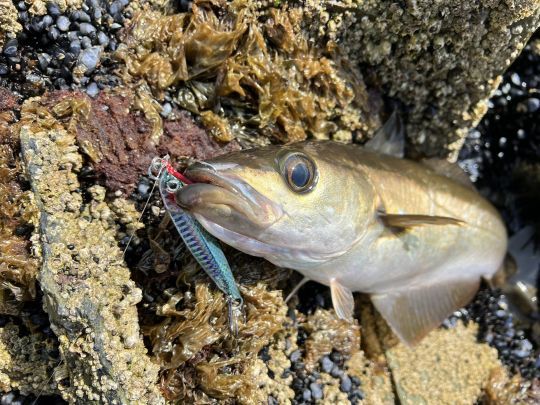
In congested areas, the use of an assist hook limits the risk of hooking. It's a lure that gave me good results when the fish were active and lifted off the bottom.
Given the weather during these 15 days, the fish stayed close to the bottom, wedged in the kelp. I quickly turned to the use of soft lures. These, with notable success for the Fiiish Master Shad, proved terribly effective. Bringing this lure slowly along the line, right up close to the bottom, brought many a large yellow spot out of its hiding place.
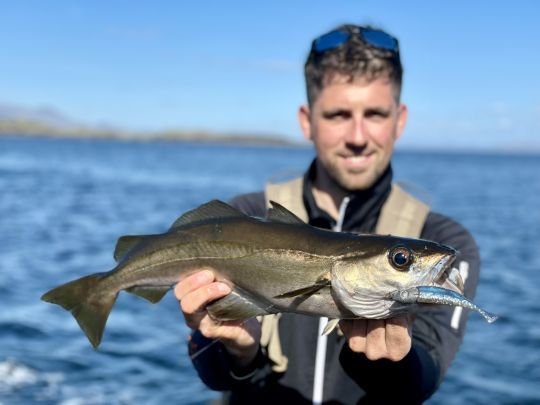
Other small shads also proved formidable. As far as colors are concerned, I stuck mainly to natural bases (blue, green and khaki).
Unfortunately, I underestimated the weight of the lead heads to use. I had initially planned to use heads weighing between 15 and 25 grams. So, naturally, I made up my tackle box with a majority of heads in this weight range. Fortunately, I had thought of taking a few heavier models, which proved very useful.
My sets were all assembled with heads ranging from 30 to 50 grams in some areas.

 /
/ 